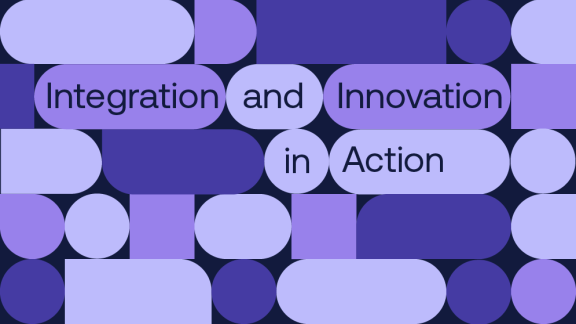Driving wellbeing in Merseyside through non-clinical but NHS-run services

Key benefits and outcomes
- The Life Rooms are run by Mersey Care NHS Foundation Trust but are open to all, offer social interventions (often through partner organisations), and are based in non-clinical community environments.
- Services focus on learning for wellbeing, pathways advisory (social prescribing) and on inclusion.
- Qualitative evidence demonstrates The Life Rooms have had significant impact on the lives of service users.
What the system faced
A decade ago, a service user listening exercise at Mersey Care NHS Foundation Trust revealed a paradox at the heart of the organisation’s services. Patients spoke of care that had helped them to build hope, skills and wellbeing, yet many did not move onto a life beyond being cared for by the trust. While the organisation’s focus was on recovery, the reality was that in many instances patients remained long-term users of clinical services.
Engagement with patients revealed that one of the major reasons for this was the influence of social determinants on health. While they were receiving good care for their mental health issues, the complex factors that were contributing to those issues – poor housing, poverty, limited employment opportunities, debt – remained unaddressed.
The trust did have a range of non-clinical, socially focused interventions designed to address these areas, including a recovery college. But the services were often sitting in clinical rather than community settings, away from where people wanted to access them.
What the system did
A decision was taken to consolidate all existing socially-focused interventions and to fundamentally redesign the way in which they were delivered. The result was the creation of The Life Rooms, an entirely new service model which was co-produced with patients.
The Life Rooms are very intentionally located in the community, engagement suggesting this was where most would prefer to receive support. Conversations with service users revealed many were relying heavily on libraries in addressing some of the wider determinants of their wellbeing – using computers to job search, for instance, or just passing the day in a warm, safe and friendly place – and were concerned about the threat of closures. In looking for a venue to house The Life Rooms, leaders at the trust therefore settled on acquiring a Carnegie Library in the north of Liverpool.
The initial business case envisaged a centre to support recovery and reduce social isolation. But it was reasoned that, if the centre was open to existing trust service users only, then it couldn’t be said to be fully inclusive. From the outset, then, the service has been accessible to anybody in the community.
Professionals – whether from healthcare, the police, the Department of Work and Pensions, the probation service or elsewhere – can and do tell people about The Life Rooms. That said, it is not necessary to receive a formal ‘referral’ to access services or to have any specific diagnosis. Many of those who come along have heard about The Life Rooms from a friend. Rather than being a facility for recovery alone, the service is a population health intervention.
There are now three Life Rooms buildings – one in Walton, one in Southport, one in Bootle – and each facility has the aim to improve population health within its community.
All provide three categories of service. Learning for wellbeing has its origins in the original recovery college model, and involves equipping someone with new expertise. There are over 100 learning opportunities on offer, provided with a range of partners. The Everyman and Playhouse theatres, for instance, offer courses which help people build confidence through acting, and the Royal Philharmonic Orchestra partners on six-week long singing programmes.
Partnerships with 120 voluntary and community sector partners, meanwhile, support the pathways advisory service. This is a social prescribing-style model. A pathways advisor will work with an individual to understand what is important to that person, and together they will co-create the pathways to support.
The idea is to offer a suite of services and resources which help address the social factors affecting someone’s wellbeing. Someone who has presented at the GP with poor mental health following a job loss, for instance, might take up a confidence course at The Life Rooms; use the IT, with help from a volunteer, to do a job search; meet an employment advisor who can offer advice on CVs and interview skills; and work with someone from the Citizens Advice Bureau to get their finances and debts in order.
The third element offered at all Life Rooms is work on inclusion. Staff proactively reach out to segments of the population that are disproportionately affected by inequities. There are currently specific teams working with refugees and asylum seekers and with those struggling with digital exclusion.
While the core pillars of The Life Rooms remain consistent across all branches, the precise nature of what is on offer is grounded in the needs of the specific local population. Population health data is combined with ‘soft’ intelligence from local professionals on specific needs. The aim to improve population health is consistent, but how that aim is met depends on the population in question. The Life Rooms Bootle, for instance, is located on the campus of a further education college and so offers a range of support particularly targeted at students.
Results and benefits
A wealth of qualitative data demonstrates the value of the integrated, preventative, population-health focused approach employed at The Life Rooms. Those involved in the project say there is no doubt that lives have been saved, along with savings to the public purse made from early intervention.
“I’ve accessed pathways advice for food bank vouchers, electricity grants through Salvation Army, charities... I’ve accessed benefits advice, financial advice... There’s probably more – I’ve had generic telephone support whilst in crisis. People have dealt with me in all kinds of states and have been emotionally supportive and helpful. The impact has mostly been in practical ways. It’s been the difference between having access to food and not having access to food, access to electricity and not having access to electricity so it’s made the difference between being able to eat and stay clean.”
Overcoming obstacles
While the individual experiences of users demonstrate the power of the approach taken at The Life Rooms, proving the service’s impact on the health and care system can be more challenging. Given much of the work is centred on prevention, proving an impact involves having to measure something that hasn’t actually happened. Changing financial streams to recognise this sort of work – basing payments on prevented outcomes rather than on activity – is also challenging.
The time period over which this work yields benefits further complicates the situation. Helping a young mother into safe housing and away from domestic violence clearly benefits her child, but that child having had a stable housing situation and so not needing to access support as an adult is an outcome which takes 20 or 30 years to manifest.
An array of local work on population health management is underway to try to address such challenges. CIPHA (Combined Intelligence for Population Health Action) is a data platform established during the early waves of the pandemic. A collaboration between the NHS, local government and Liverpool University, it unites data on local populations across Cheshire and Merseyside. This data is then being used within a population health management programme called System P, through which groups that might need particular support are identified.
As part of that data analysis, the outcomes of 6,000 users of Life Rooms services are now being reviewed. The hope is this will provide quantitative evidence of the approach’s impact – for instance, it might be possible to identify how people who have used The Life Rooms have then gone on to use (or not use) services elsewhere in the system. It will also be possible to understand in more detail than before who has accessed services, right down to postcode level.
Takeaway tips
- Data is important, but ultimately successful population health projects come down to the people. That includes relationships between different organisations within an ICS, but it also includes relationships with the population being served. It is important to understand communities from a human perspective as well through data.
- There are universal principles to delivering interventions which address social determinants of wellbeing, but that does not mean there should be an entirely uniform approach. The Life Rooms model is one that has now worked in three different geographic areas and communities and its principles remain consistent (multi-sectoral support, non-clinical settings, socially focused interventions). So too do the areas of focus. The specific interventions and means of improving population health, however, vary depending on the community served. Humility should be employed when spreading an existing approach to new communities – effort must be made to understand the unique needs of different populations.
- Creating this sort of very different approach requires wholehearted support from senior levels. Board members need to be open to a shift from what has traditionally been done, and that openness then needs to extend throughout the system – not least to clinicians.
- Population health management projects can mean challenging perceptions of what the NHS is for and what it should do. Running a non-clinical service, located in a library, which focuses on the influences of ill health rather than ill health itself, and which anyone can attend without a referral and with no need for a diagnosed illness challenges understandings of what the NHS is about. It requires a change of mindset about how best to secure and support the health of citizens. This sort of change can be difficult. It requires conversations and engagement with colleagues across the system.
- The governance needs to be right. When the NHS is commissioning partners to provide services, there needs to be quality monitoring and safety assurance. Audit trails are crucial, particularly with access to data.
Further information
For more information contact Michael Crilly, director of social health and community inclusion at Mersey Care NHS Foundation Trust.



